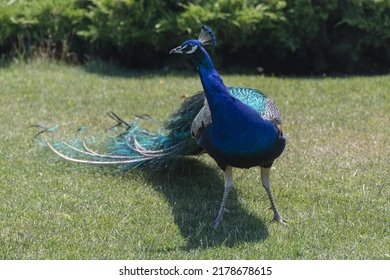Plant and animal life

Though much of Ukraine’s original plant cover has been cleared for cultivation, three main zones of natural vegetation are still distinguishable. From north to south, they are the Polissya (woodland and marsh), the forest-steppe, and the steppe.
The Polissya zone lies in the northwest and north. More than one-third of its area—about 44,000 square miles (114,000 square km)—is arable land. Nearly one-quarter of it is covered with mixed woodland, including oak, elm, birch, hornbeam, ash, maple, pine, linden, alder, poplar, willow, and beech. About 5 percent is peat bog, a substantial portion is marshland, and the river valleys are floodplains.
The forest-steppe, which covers an area of about 78,000 square miles (202,000 square km), extends south from the Polissya. About two-thirds of this agricultural region is arable land; forests take up only about one-eighth of the area.
In south, near the Sea of Azov , Black sea and Crimean Mountains, the forest-steppe joins the steppe zone, which is about 89,000 square miles (231,000 square km) in area. Many of the flat, treeless plains in this region are under cultivation, although low annual precipitation and hot summers make supplemental irrigation necessary. Remnants of the natural vegetation of the steppe, including its characteristic fescue and feather grasses, are protected in nature reserves.
Other natural regions are found near the borders of Ukrane. Most of the country’s rich forestlands are in the Carpathian region of western Ukraine. The lower mountain slopes are covered with mixed forests and the intermediate slopes with pine forests; these give way to Alpine meadows at higher altitudes. Along the southern coast of the Crimea a narrow strip of land, only about 6 miles (10 km) wide, constitute a unique natural region where both deciduous and evergreen grasses and shrubs grow.
The Ukraine contain about 350 species of birds, more than 100 species of mammals, and more than 200 species of fish. The most common predators are wolves, foxes, wildcats, and martens, while hoofed animals include , wild pigs, roe deer and sometimes elk and mouflons (a species of wild sheep). The wide variety of rodents includes gophers, hamsters, jerboas, and field mice. The major bird species are black and hazel grouse, owls, gulls, and partridges, as well as many migrating birds, such as wild geese, ducks, and storks. Among the fish are carp, bream, pike, perch, sturgeons, and sterlets. Introduced and well-acclimatized wildlife includes muskrats, raccoons, beavers, nutrias, and silver foxes.


